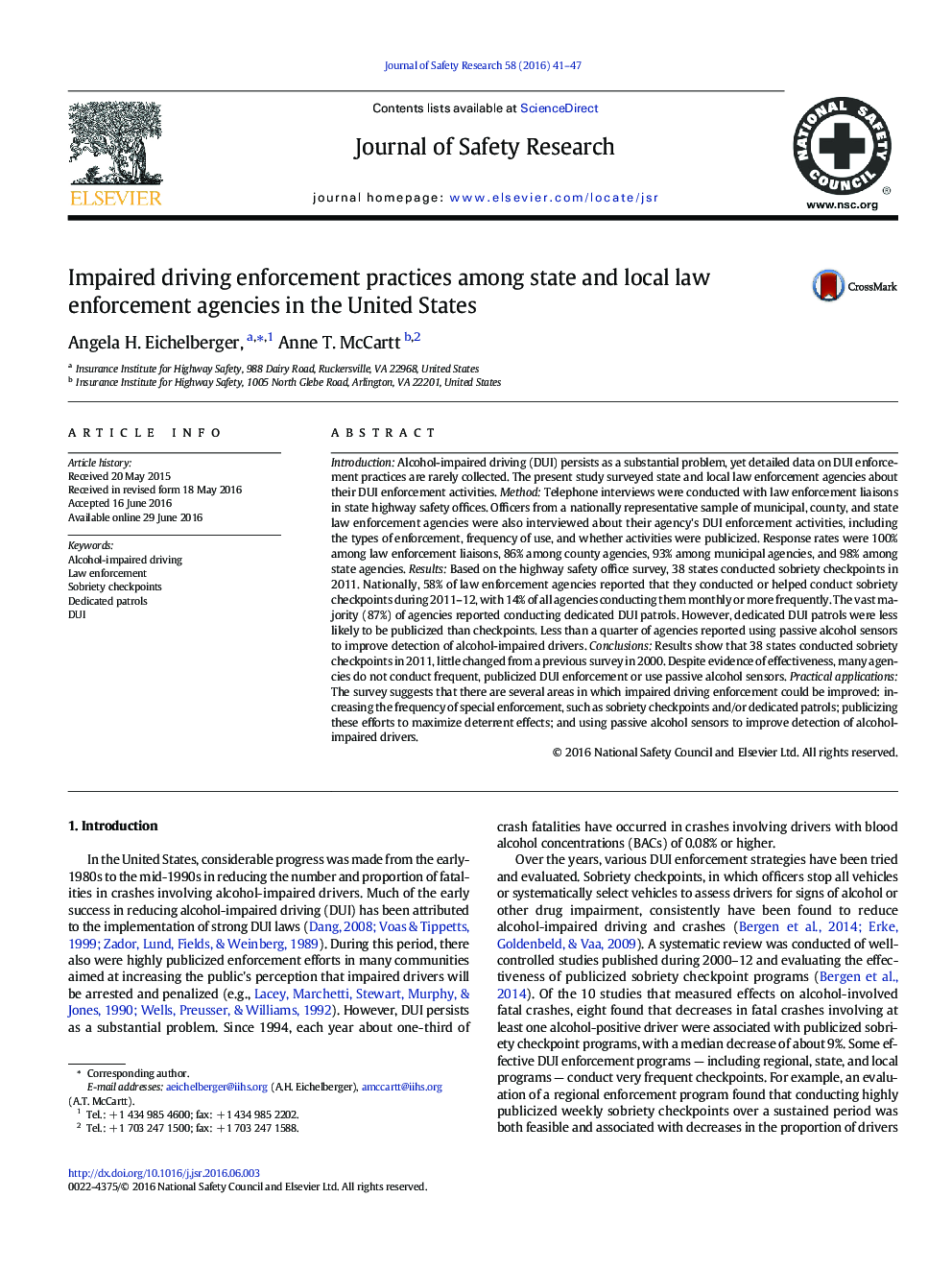| کد مقاله | کد نشریه | سال انتشار | مقاله انگلیسی | نسخه تمام متن |
|---|---|---|---|---|
| 587260 | 1453302 | 2016 | 7 صفحه PDF | دانلود رایگان |
• Nationally, 58% of law enforcement agencies reported that they conducted sobriety checkpoints during 2011-12, with 14% of all agencies conducting them monthly or more frequently.
• The survey suggests there are several areas in which impaired driving enforcement could be improved.
• Despite evidence of effectiveness, many agencies do not conduct frequent, publicized DUI enforcement or use passive alcohol sensors.
IntroductionAlcohol-impaired driving (DUI) persists as a substantial problem, yet detailed data on DUI enforcement practices are rarely collected. The present study surveyed state and local law enforcement agencies about their DUI enforcement activities.MethodTelephone interviews were conducted with law enforcement liaisons in state highway safety offices. Officers from a nationally representative sample of municipal, county, and state law enforcement agencies were also interviewed about their agency's DUI enforcement activities, including the types of enforcement, frequency of use, and whether activities were publicized. Response rates were 100% among law enforcement liaisons, 86% among county agencies, 93% among municipal agencies, and 98% among state agencies.ResultsBased on the highway safety office survey, 38 states conducted sobriety checkpoints in 2011. Nationally, 58% of law enforcement agencies reported that they conducted or helped conduct sobriety checkpoints during 2011–12, with 14% of all agencies conducting them monthly or more frequently. The vast majority (87%) of agencies reported conducting dedicated DUI patrols. However, dedicated DUI patrols were less likely to be publicized than checkpoints. Less than a quarter of agencies reported using passive alcohol sensors to improve detection of alcohol-impaired drivers.ConclusionsResults show that 38 states conducted sobriety checkpoints in 2011, little changed from a previous survey in 2000. Despite evidence of effectiveness, many agencies do not conduct frequent, publicized DUI enforcement or use passive alcohol sensors.Practical applicationsThe survey suggests that there are several areas in which impaired driving enforcement could be improved: increasing the frequency of special enforcement, such as sobriety checkpoints and/or dedicated patrols; publicizing these efforts to maximize deterrent effects; and using passive alcohol sensors to improve detection of alcohol-impaired drivers.
Journal: Journal of Safety Research - Volume 58, September 2016, Pages 41–47
